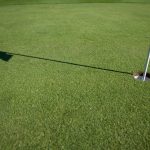How to Putt
If you already know how to putt, you can skip straight to Chapter 2: Choose the Right Putter.
If you could to with a reminder, or some putting tips, then follow these 4 simple steps.
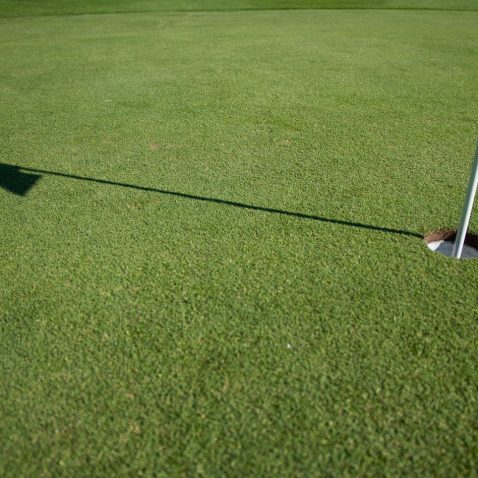
Grip Your Putter
There are different ways you can grip your putter and the way you grip it can have an effect on your shot.
A firm grip is always best, with your hands, wrists, and arms staying still.
For more information on how to grip your putter, go to Chapter 4: Reverse Overlap.
Get in the Right Stance
The way you stand is hugely important when it comes to putting your ball.
See Chapter 6: Balance for more information on how you should be standing.
Keep Your Head Positioned Over the Ball
Chapter 6 has all the information you need to know about perfecting your position.
Stroke
The way you hit ball depends on the distance, the green, the weather, and the clubface.
The way you stroke is dominated by the shoulders – keep your wrists solid. Keep your legs completely still, and keep your weight 50/50 on both feet.
Choose the Right Putter
There are different putter styles available out there, and each comes with their own pros and cons.
The way the putter head is shaped can either favor your putting style or will do your stroke a disservice.
It’s important to think about which putter head you will help keep your points down.
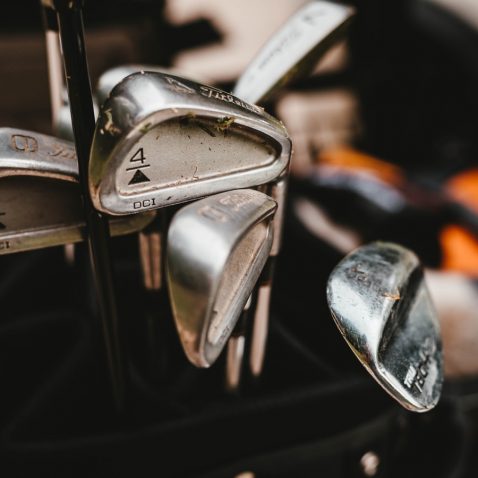
Blade
You may benefit from a blade putter if you have an arc putting stroke.
This type of putter has a straight, blade-style head with a thin flange.
Peripheral-Weighted (AKA Heel-Toe Weighted)
This putter style is a more evolved version of the blade putter.
Heel-toe weighted putters are longer and thinner than blades and are delicate to use.
The extra weight in the heel and toe will help increase the accuracy of your putt.
Mallet
Mallet putters have larger faces that can come in different shapes – but they tend to look like a mallet.
You should go for a mallet-style putter if you’re aiming for a straight back stroke – this putter will help you straighten your stroke.
Read the Green
You can tell a lot about how you should hit the ball just by looking at the green around you.
You should always study the green before putting it if you want an accurate shot.
Take your time, read the green, and putt the ball.

Slope
First of all, look out for any sloping at all. No green is completely flat, so use the slopes to your advantage.
For better views of slopes, stand behind the hole and see the journey your ball will take from that perspective.
Keep an eye out for any contours in the green – then you can predict whether the ball will break to the left of right on its journey to the hole.
Grass
The length of the grass has an effect on your ball’s journey to the hole.
If the grass is slightly longer, you’ll have to hit the ball harder.
If the grass is super short, you’ll only need a small tap of the ball to get it moving.
If the grass is shiny, your ball will most likely travel a lot smoother.
Have a feel with your feet or even your hands. This will determine how hard you need to hit the ball.
Reverse Overlap
The way you grip your putter can have an effect on your swing.
The most popular putting grip is the reverse overlap – it’s the easiest and the most effective.
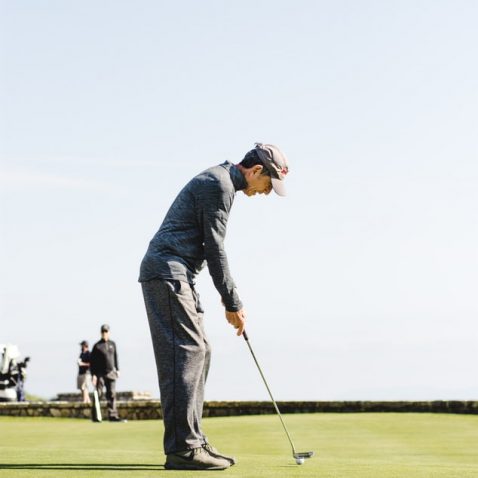
- Apply your left hand to the grip of the putter, and rest your right hand just beneath it.
- Link both your hands together by lifting your index finger of your left hand, and wrap it over the fingers of your right hand.
- Make sure your left thumb is resting flat on top of the grip – this is why the putter isn’t round. Your left thumb will provide additional support and help you keep the putter face square on impact.
- Your left hand will determine the direction on the face, whereas your right hand will act as a piston during your stroke.
Practice at Home
There are lots of ways you can practice your putting distance accuracy both at home and on the course.
Some of these methods you can even do in front of the TV!

Card Method
Lay a small piece of card or paper down several feet away from you, and then try to putt the golf ball with just enough speed so it stops on top of the card.
If this is repeated regularly, your putting distance control will be impeccable when it comes to the real thing.
This technique is great for improving your accuracy, and is easily done at home – all you need is your club, ball and a piece of paper. Simple!
4-Ball Method
Get three or four balls, and drop them each two feet apart. Start by standing 10 feet away from the first one, and putt it, working your way back to 50 feet.
If you repeat this, you’ll get used to the speed of the swing you need for each distance.
Phonebook Method
Phonebooks are useful in more ways than one!
For this quick and easy putting practice method, just put two phone books (or any other book if you don’t have phone books!) down on the ground, leaving enough distance so that you can just about fit your putter through.
Then, practice your strokes, while trying to keep the putter straight and the putter face square.
If your putter bumps into the books, then you need to keep at it!
Balance
Balance is hugely important when it comes to golf – especially putting.
If you’re unsteady on your feet, your shot can be skewed.
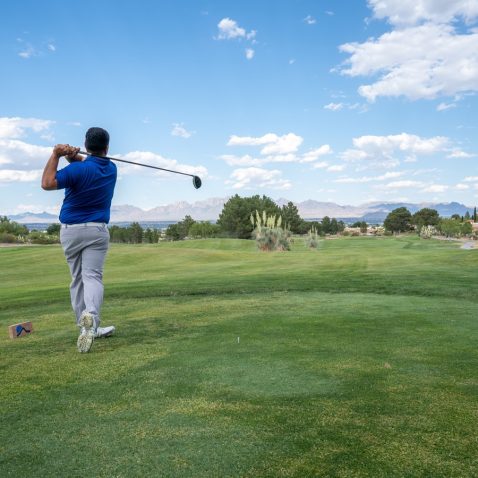
Your legs, hands, arms, and torso should all be working together in harmony.
It all comes down to weight distribution. Your weight should be evenly distributed across your left and right foot.
On average, amateurs have 20% more weight on their back (right) foot, and they put more pressure on their toes as oppose to their heel.
Professionals distribute their weight more evenly – that shows that professionals know what they’re doing when it comes to balancing!
The key is stability. Yoga and Pilates require core strength, but it also comes in useful with golf.
It takes practice, but one you’ve engaged your core muscles, your stance and balance will be perfect.
Lining Up Your Shot
You may have seen professional golfers drawing lines around their ball.
The likes of Tiger Woods, Jason Day and Jordan Speith all draw lines on their ball.
There’s a method behind the madness!
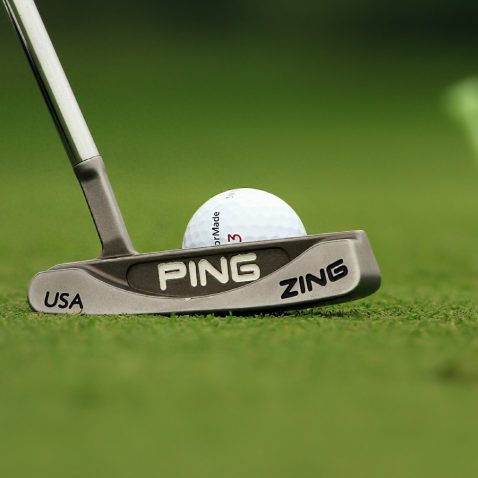
Drawing a line around the circumference of your ball may help you get your ball started on the right line, helping with your aim and alignment.
Ensure your eyes are directly over the ball, make sure you’re all lined up, and hit the ball.
If you don’t want to draw on your ball, use the markings that are already on the golf ball to your advantage.
You can use the logo to line up where you want the putt to start.
Summary
Hopefully, you’ve found this guide useful, and you can take all of this information on to the green with you.
Golf is 50% mind work, 50% bodywork. Once you train your brain, your game will improve.
As professional golfer Tommy Bolt said: “The mind messes up more shots than the body.”
Additional Resources
- Best Golf Putters: The Ultimate Buying Guide
- Golf Putting Simulator – Practice at Home
- S7K Standing Putter Review – Is it the Best Standing Putter?
We recommend you bookmark this page so you can refer to these tips whenever you need!
If you have any questions or any other tips that you want to share with us, then post in the comments below!
Share the Love
If you found this post useful, please let others know about it by sharing it.

